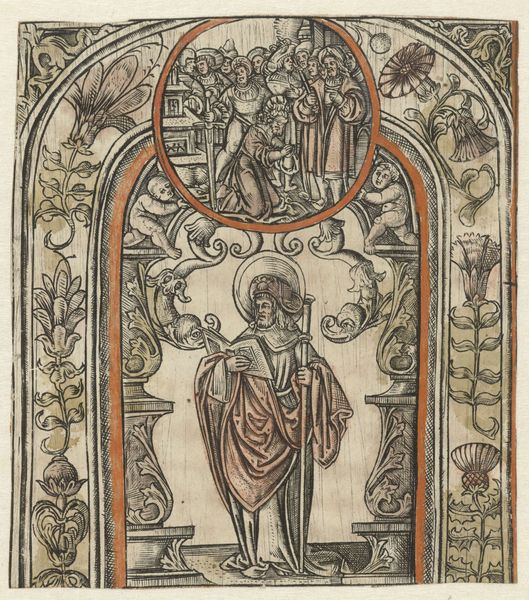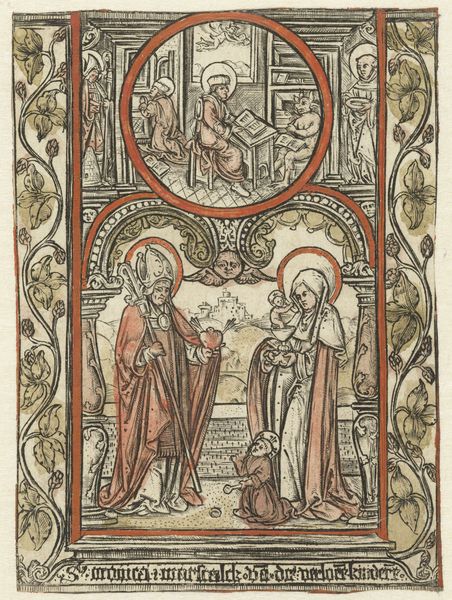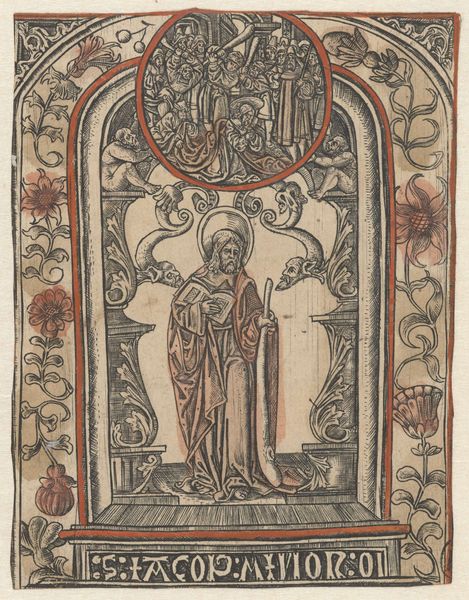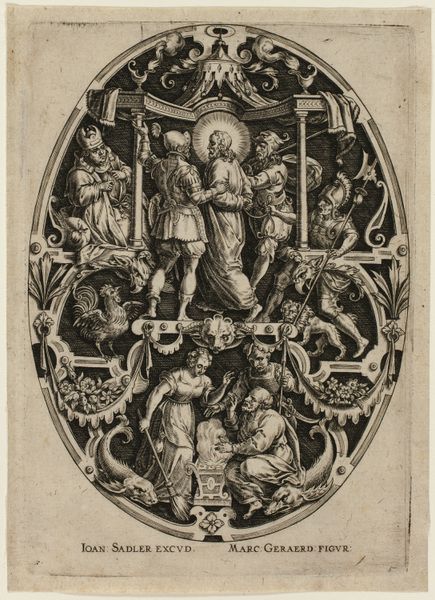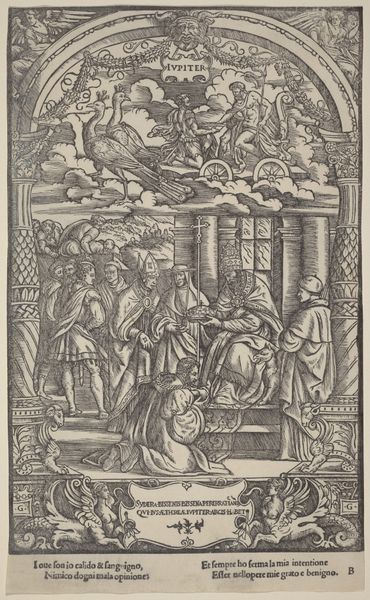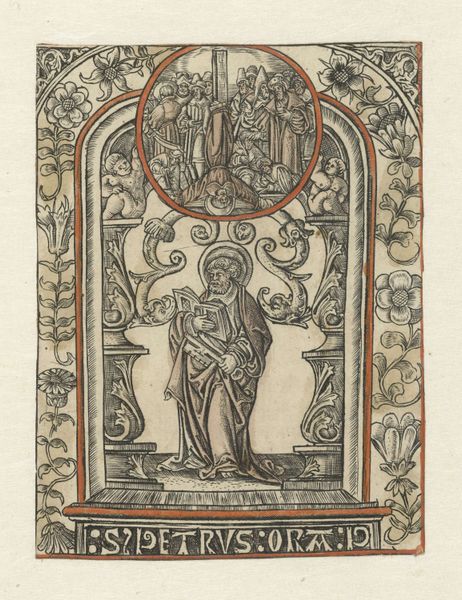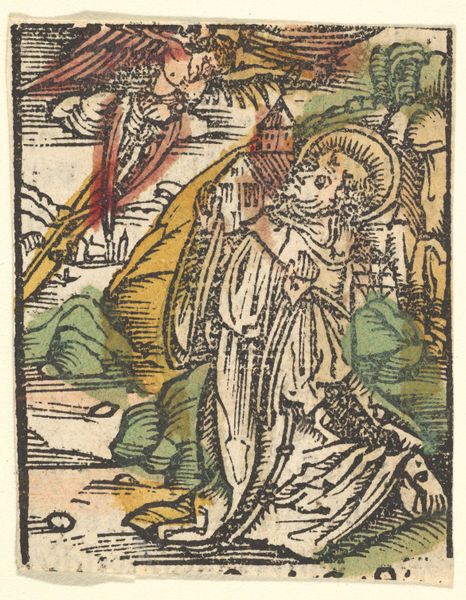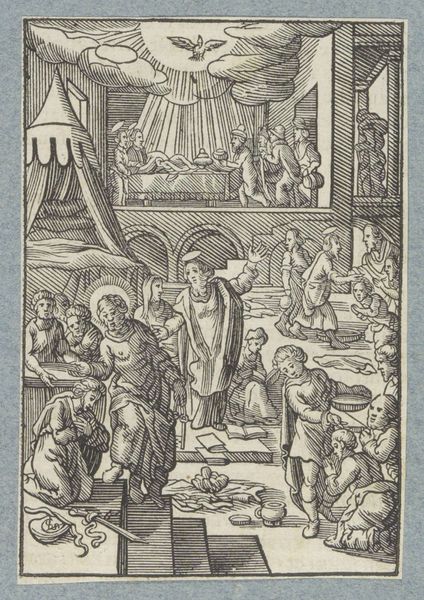
print, woodcut, engraving
#
portrait
#
aged paper
#
toned paper
#
pen drawing
#
mechanical pen drawing
# print
#
sketch book
#
figuration
#
11_renaissance
#
personal sketchbook
#
pen-ink sketch
#
woodcut
#
line
#
pen work
#
sketchbook drawing
#
history-painting
#
northern-renaissance
#
sketchbook art
#
engraving
Dimensions: height 103 mm, width 79 mm, height 103 mm, width 79 mm
Copyright: Rijks Museum: Open Domain
Curator: Let's discuss "The Apostle Matthew and his Martyrdom" by Allaert Claesz, created sometime between 1510 and 1530. It's currently held here at the Rijksmuseum. Editor: My initial impression is one of contained violence. The piece, despite its decorative borders, exudes a tension emanating from the contrast between the serene central figure and the implied turmoil. Curator: Precisely. Let's examine the composition more closely. Notice the use of line—delicate yet firm—creating depth and texture within the limited tonal range. The work employs an intriguing juxtaposition of forms. The solid geometric structure framing Matthew contrasts sharply with the organic flow of the surrounding foliage and the tumultuous scene depicted in the upper lunette. Editor: That lunette really captures the narrative weight. Saint Matthew’s martyrdom, a brutal execution, is placed above him, almost like a premonition or halo replaced by his grim fate. The sword at his side echoes this, serving as both a symbol of authority and an instrument of death. Isn't that an interesting dichotomy? Curator: An astute observation. We can see this symbolic doubling manifested materially in the woodcut's structure: the solid architecture containing the floral ornaments suggests a complex relationship between classical stability and natural ephemerality. Furthermore, look closely at the modeling of Matthew's drapery. The intricate network of lines and their interaction yields an undulating sense of fabric, which speaks to the northern Renaissance master's technical skill. Editor: I see Matthew is rendered with such calm and dignity. Given his fate foretold above, it underscores his acceptance and strength, linking him to a tradition of martyrs. And this, alongside the Renaissance aesthetic, lends a certain timelessness to the image. It is more than a portrait; it becomes an icon of sacrifice. Curator: I agree wholeheartedly. Claesz uses Matthew’s iconic stance to communicate ideas regarding knowledge, sacrifice, and ultimately, faith's triumph over earthly suffering. It’s remarkable to see all these conceptual components so elegantly woven together through form and medium. Editor: The work serves as a potent reminder of the power of visual symbols to condense complex narratives into a single, compelling image. It offers insight into cultural beliefs and practices and continues to resonate today. Curator: Well put! "The Apostle Matthew and his Martyrdom," through its structural choices, achieves something far more than just representation—it's an encapsulation of faith itself.
Comments
No comments
Be the first to comment and join the conversation on the ultimate creative platform.
